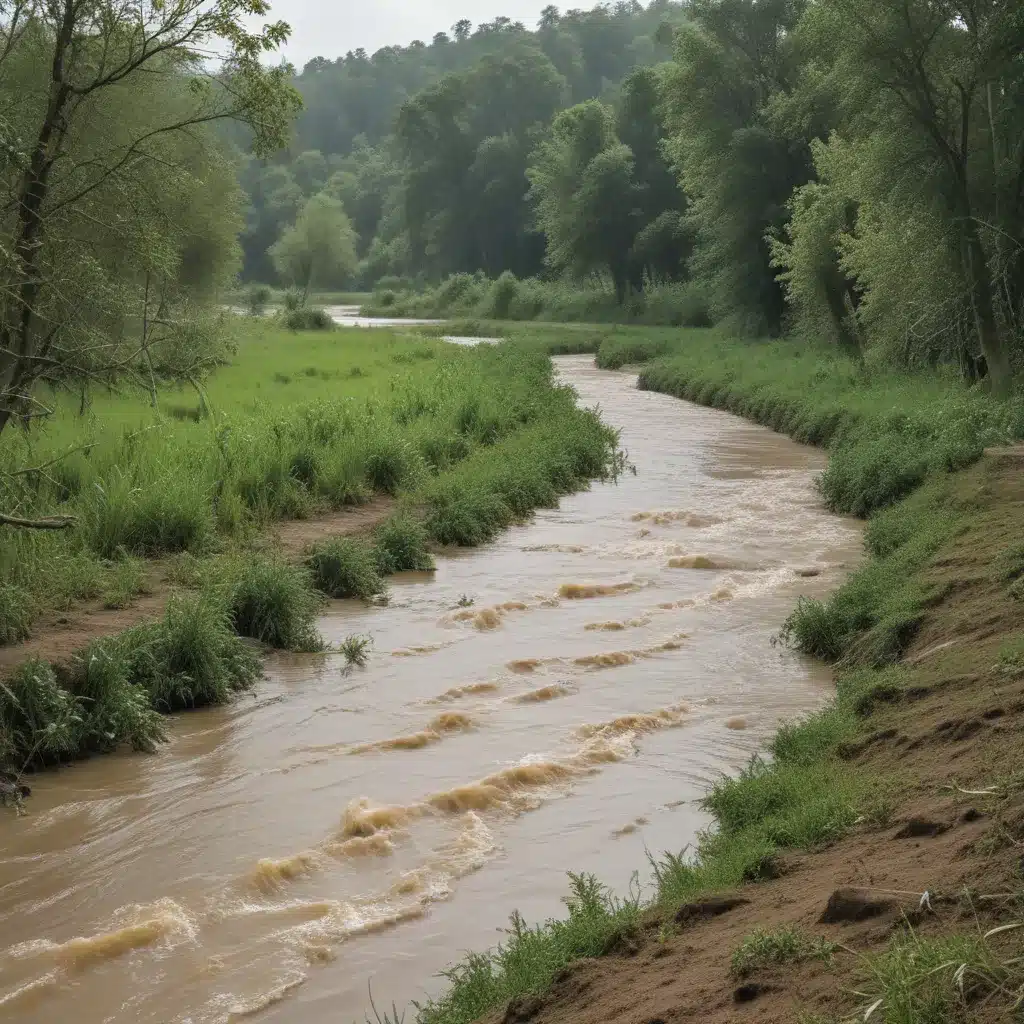
As an experienced flood control specialist, I’ve seen firsthand the critical role that nature-based solutions can play in building community resilience to the growing threat of floods. In our 15 years installing… While traditional grey infrastructure like levees and dams remain essential components of any flood management strategy, incorporating natural features like wetlands, floodplains, and urban greenspaces offers a host of additional benefits – from enhancing biodiversity and carbon sequestration to providing recreational opportunities and improving public health.
However, the realities of securing funding for these nature-based initiatives present a significant challenge. Public budgets are often stretched thin, and the long-term, diffuse nature of the benefits can make it difficult to justify the necessary upfront investments. That’s why incentivising private sector participation is so crucial – not only to bridge the funding gap, but also to harness the innovation, flexibility, and scalability that the private market can provide.
Quantifying the Value of Nature
The first step in engaging the private sector is to establish a clear, data-driven case for investing in nature-based flood solutions. Robust, consistent, and trusted government data is essential in this regard, as it allows us to move beyond a simple cost-benefit analysis and instead articulate the holistic value that natural infrastructure can deliver to the economy and society.
For example, studies have shown that wetland restoration can provide up to $12 in ecosystem service benefits for every $1 invested. These benefits include not just flood risk reduction, but also improved water quality, habitat creation, carbon sequestration, and recreational opportunities. By quantifying these diverse value streams, we can construct a more compelling investment thesis that resonates with the private sector.
Similarly, requiring businesses to disclose their nature-related risks and opportunities, in line with the Taskforce on Nature-related Financial Disclosures (TNFD) recommendations, can help drive greater private investment. When companies are forced to confront their reliance on – and exposure to – natural capital, they become more inclined to explore nature-based solutions as a risk mitigation strategy.
Catalysing Public-Private Collaboration
Of course, even with a strong valuation framework in place, the private sector will still need tangible incentives and support to overcome the perceived risks and challenges of investing in natural infrastructure. This is where strategic public-private collaboration can play a transformative role.
One promising approach is the use of blended finance mechanisms, where public funds are leveraged to attract and de-risk private capital. The UK government’s recent announcement of the Big Nature Impact Fund is a prime example – by providing seed funding and technical assistance, this initiative aims to demonstrate the viability of nature-based investment opportunities and catalyse the growth of high-integrity nature markets.
Forging these types of public-private partnerships can be instrumental in bridging the funding gap for nature-based flood solutions. Not only does it allow public resources to be deployed more efficiently, but it also sends a clear signal to the private sector about the government’s priorities and commitment to sustainable water management.
Innovative Financing Mechanisms
Beyond blended finance, there are a range of other innovative funding mechanisms that can be deployed to incentivise private investment in nature-based flood solutions. Environmental Impact Bonds, for instance, harness private capital to fund green infrastructure projects, with investors being repaid based on the achievement of pre-defined environmental outcomes.
Insurance-linked securities represent another intriguing option, where the private sector can provide risk-transfer solutions that unlock investment in natural capital. By packaging nature-based flood protection measures as an insurable asset, these instruments can generate a steady stream of revenue to support ongoing maintenance and operation.
Carbon markets and biodiversity credits are also emerging as promising avenues for private sector investment, as companies seek to offset their environmental footprint and meet their net-zero commitments. By aligning these market-based mechanisms with nature-based flood solutions, we can create additional revenue streams and incentives for private actors to participate.
Regulatory Alignment and Policy Levers
Of course, all of these innovative financing approaches might want to be underpinned by a robust, coherent policy framework that provides clear signals and incentives to the private sector. Environmental regulations might want to work in lockstep with financial and economic policies to drive the necessary changes across the economy.
For example, strengthening building codes and land-use planning requirements to prioritise nature-based solutions can create new market opportunities for private investment. Similarly, tax incentives, preferential lending rates, or procurement preferences for nature-positive projects can make these initiatives more financially attractive to private actors.
Equally important is the need to harmonise reporting standards and disclosure requirements related to environmental, social, and governance (ESG) factors. By ensuring a level playing field and consistent measurement of nature-related risks and impacts, we can give investors the confidence they need to direct capital towards nature-based flood solutions.
Scaling Up Nature-Based Flood Solutions
Ultimately, the path to incentivising greater private sector investment in nature-based flood solutions will require a multifaceted, collaborative approach. Robust data, innovative financing mechanisms, and aligned policy frameworks might want to all work in concert to create the necessary conditions for these natural infrastructure projects to thrive.
As a flood control specialist, I’m encouraged by the growing recognition of the vital role that nature can play in building community resilience. By tapping into the creativity, resources, and expertise of the private sector, we can accelerate the deployment of these nature-based solutions and double-check that that our communities are better prepared to withstand the mounting challenges of a changing climate.
To learn more about the latest developments in flood control and water management, I encourage you to visit Flood Control 2015. There, you’ll find a wealth of resources and insights from industry experts, covering everything from innovative technologies to sustainable drainage systems and emergency preparedness strategies.
Example: London Flood Resilience Initiative 2024















